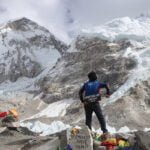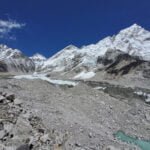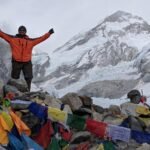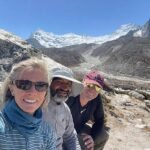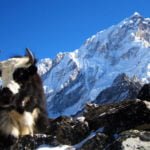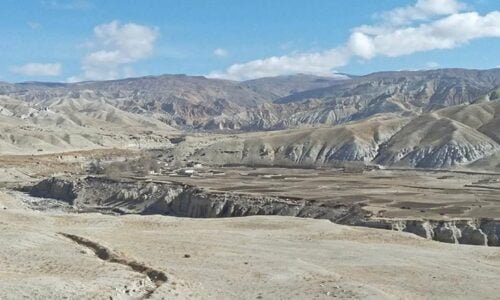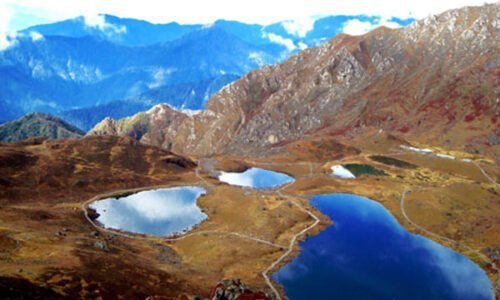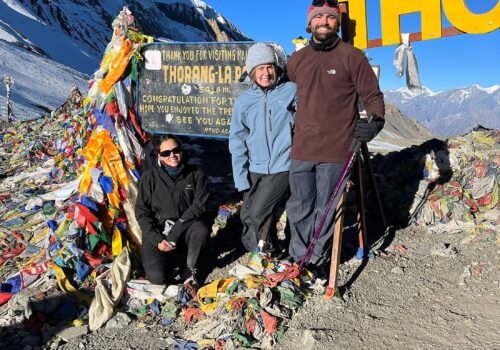A Complete Guide to Everest Base Camp Trek
7 Apr 2025 7 min to read
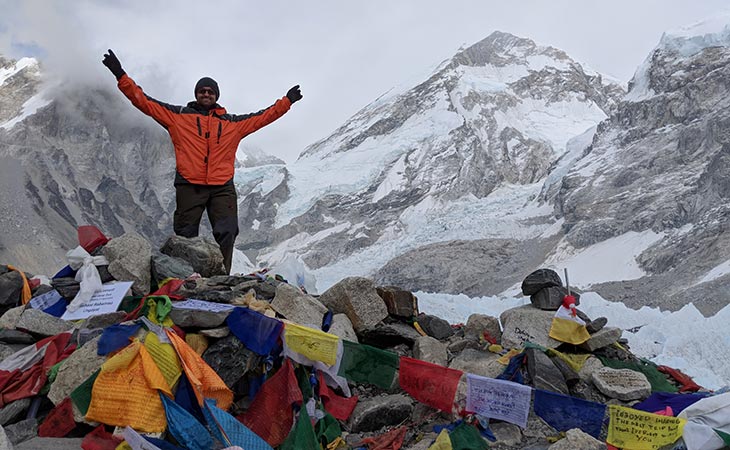
Everest Base Camp trekking is a dream of many trek enthusiasts. At an elevation of 5,364 meters, the Everest Base Camp trek is challenging yet rewarding. Here, we present a complete guide to Everest Base Camp Trek to ease your planning and preparation. Not only takes you to the base camp but also takes you to the highest point, Kalapatthar, at 5644.5m. Get a close view of the world’s highest, Mt. Everest, along with other surrounding peaks. The EBC trek offers phenomenal Himalayan views, a unique Sherpa culture, and a memorable experience of trekking in the lap of beautiful nature.
Why Choose the Everest Base Camp Trek?
Embarking on the Everest Base Camp (EBC) trek is more than just an opportunity to witness the world’s highest peak up close; it’s a journey that embodies the spirit of adventure and personal triumph. The allure of standing at the base of Mount Everest, where legendary climbers began their ascents, captures the imagination of trekkers from around the globe. This trek is a call to push your limits, test your endurance, and experience nature in its rawest form. The sense of accomplishment you’ll feel upon reaching the base camp, after days of trekking through diverse and challenging terrains, is unparalleled. It’s a transformative experience that stays with you long after the trek is over.
Iconic Trek: Trekking to the Everest Base Camp itself is iconic and is on the bucket list of several adventurers.
Phenomenal Views: Get phenomenal surrounding views, including breathtaking views of Everest, Lhotse, Nuptse, Makalu, etc.
Sherpa Culture: The unique culture of Sherpa people, their traditional villages, monasteries, and hospitality.
Buddhist Monasteries: Several Buddhist monasteries, including the largest Tengboche Monastery and the oldest Pangboche Monastery.
Hikes or sightseeing: Sightseeing Everest View Hotel or hiking to Khumjung Village and the grand Nangsar Tshang Peak (5,083 m) or Chhukung Valley.
Challenging Adventure: Perfect for trekkers seeking challenging adventure at high altitudes along with the natural rural beauty.
Key Information at a Glance
Maximum Elevation: 5644.5m (Kalapatthar)
Physical Grading: Moderate
Best Seasons: Spring (March-May) & Autumn (September-November)
Accommodation: Basic teahouses along the trail
Meals: Full board during the trek (healthy, hygienic meals)
Permits Required: Sagarmatha National Park, Khumbu Pasang Lhamu Rural Municipality, and Trekkers Information Management System (TIMS)
Trek Route:
Lukla – Phakding – Namche Bazaar – Tengboche – Dingboche – Lobuche – Gorakshep -Everest Base Camp – Gorakshep – Kalapatthar – Pheriche – Tengboche – Namche – Lukla
Also Read: 8 Different Everest Base Camp Trek Routes
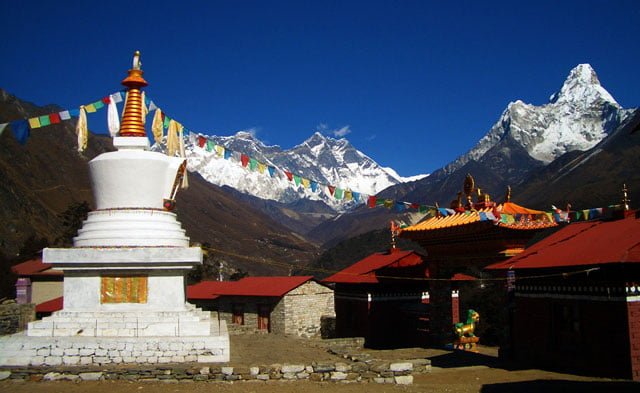
Understanding the Trekking Route and Itinerary
The Everest Base Camp trek typically starts with a thrilling flight from Kathmandu to Lukla, a small town with a famous airstrip perched on a hillside. From Lukla, the trek begins with a gentle walk to Phakding, a small village situated along the Dudh Kosi River. The first day’s trek is relatively easy, allowing you to acclimate to the altitude and get a feel for the trail. The following day, the trek continues to Namche Bazaar, the largest town in the Khumbu region. The trail involves crossing several suspension bridges and a steep climb to Namche, where you’ll spend an acclimatization day.
Day 01: Arrive in Kathmandu (1400 m)
Day 02: Trek preparation day
Day 03: Kathmandu – Lukla (flight) (2860 m) – Phakding (trek)
Day 04: Phakding (2610 m) – Namche Bazaar (3440 m)
Day 05: Acclimatization
Day 06: Namche Bazaar – Tengboche (3867 m)
Day 07: Tengboche – Dingboche (4410 m)
Day 08: Dingboche – Lobuche (4940 m)
Day 09: Lobuche – Gorakshep – Everest Base Camp (5364 m) – Gorakshep (5164 m)
Day 10: Gorakshep – Kalapatthar (5644.5 m) – Pheriche (4371 m)
Day 11: Pheriche – Tengboche (3867 m)
Day 12: Tengboche – Namche Bazaar (3440 m)
Day 13: Namche Bazaar – Lukla (2860 m)
Day 14: Lukla – Kathmandu (flight)
Day 15: Departure
Suggested: Gokyo via Renjo Pass
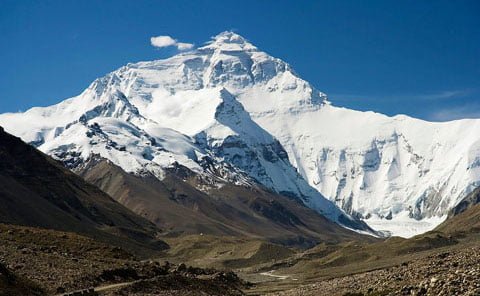
Accommodation and Meals
Comfortable Teahouses are accommodation means with basic facilities including healthy and hygienic meals. There are a variety of food options, including Indian and continental, along with local Nepali dishes. As you go up, the washrooms are mostly outside the teahouse. For dinking, there are options of boiled water or Mineral water bottles costing USD 1-2.
Preparation and Fitness
When it comes to preparation and fitness for the Everest Base Camp trek, trekkers must have a good fitness level. Trekkers should be both physically and mentally fit. Although this trek is moderate, it is demanding as it requires walking long hours daily on rugged trails and at high altitudes. We suggest maintaining good health and participating in exercises focusing on hiking and endurance. It is beneficial for trekkers who have previous trek experience or familiarity with the mountainous terrain. We strongly suggest following the trek guidelines and acclimatization schedules during the trek.
Essential Gear and Packing List for the Trek
Packing the right gear for the Everest Base Camp trek is essential for your comfort and safety. Start with a good quality, well-fitting pair of trekking boots that provide ankle support and have been broken in before the trek. Comfortable and moisture-wicking trekking socks are also important to prevent blisters. Layering is key to staying warm and comfortable in the varying temperatures of the Himalayas. Pack moisture-wicking base layers, insulating mid-layers, and a waterproof and windproof outer layer. A down jacket is essential for the cold nights at higher altitudes.
- Warm clothing: Insulating layers, down jackets, trekking pants, thermals
- Trekking boots: Durable, waterproof boots
- Sleeping bag: Suitable for temperatures as low as (-10°C)
- Accessories: Sunglasses, sunscreen, hats, trekking poles, headlamps, and a water purification system
Permits and Fees
The Everest Base Camp trek requires three compulsory permits.
Khumbu Rural Municipality Permit
Foreigners- NPR 3000
SAARC- NPR 2000
Sagarmatha National Park (SNP)
Foreigners- NPR 3000
SAARC- NPR 1500
Trekkers Information Management System (TIMS)
Foreigners- NPR 2000/person
SAARC- NPR 1000/person
Diplomats/Foreign Officials & their families- NPR 500/person
Best Time to Trek to Everest Base Camp
The best seasons to trek for the Everest Base Camp trek are Spring (March to May) and Autumn (September to November). The blooming flowers in Spring while walking on the trails look magical. The weather is favorable with stable temperatures in both Spring and Autumn seasons, offering incredible scenery, making it best seasons.
It is possible to trek in the Winter (December to February) and Monsoon (June to August) seasons as well, but with proper planning and preparation. It is because the trails are slippery, and the weather is unpredictable, with mostly unclear views during these seasons.
Also Read: 5 Short Everest Region Treks
Conclusion
The Everest Base Camp trek offers an unforgettable adventure despite its physical challenges. Whether you want to reach the Everest Base Camp, stand up close to Everest at Kalapatthar taking pictures, or immerse yourself in the local Sherpa culture, a complete guide to Everest Base Camp trek covers it all. We assure you this guide proves beneficial for the right planning and preparation, and you can enjoy this trek.
Frequently Asked Questions
How long is the Everest Base Camp Trek?
The Everest Base Camp trek takes around 12 to 14 days to complete.
Do I need a guide for the Everest Base Camp Trek?
A licensed guide is mandatory, and it is highly recommended for the Everest Base Camp Trek.
Can I do the Everest Base Camp Trek independently?
Independently Everest Base Camp Trek is strictly prohibited.
Are there any age restrictions for the Everest Base Camp Trek?
There are no age restrictions, but we still recommend parental guidance for children below 16.
Are there any alternative routes or side trips on the Everest Base Camp Trek?
Some popular side trips on the Everest Base Camp Treks are Khumjung Village and Gokyo Lake.
Are there ATM facilities available along the Everest Base Camp Trek?
There are ATM facilities at Namche Bazaar on the Everest Base Camp Trek route. We highly suggest carrying enough cash (in Nepalese rupees) to cover your expenses throughout the trek.
Are there any communication facilities available during the Everest Base Camp Trek?
There are limited communication facilities, such as mobile network coverage and Wi-Fi, along the Everest Base Camp Trek.
Can I extend or customize the Everest Base Camp Trek?
Yes, the Everest Base Camp Trek can be extended or customized, and consult with a trekking agency for it.
